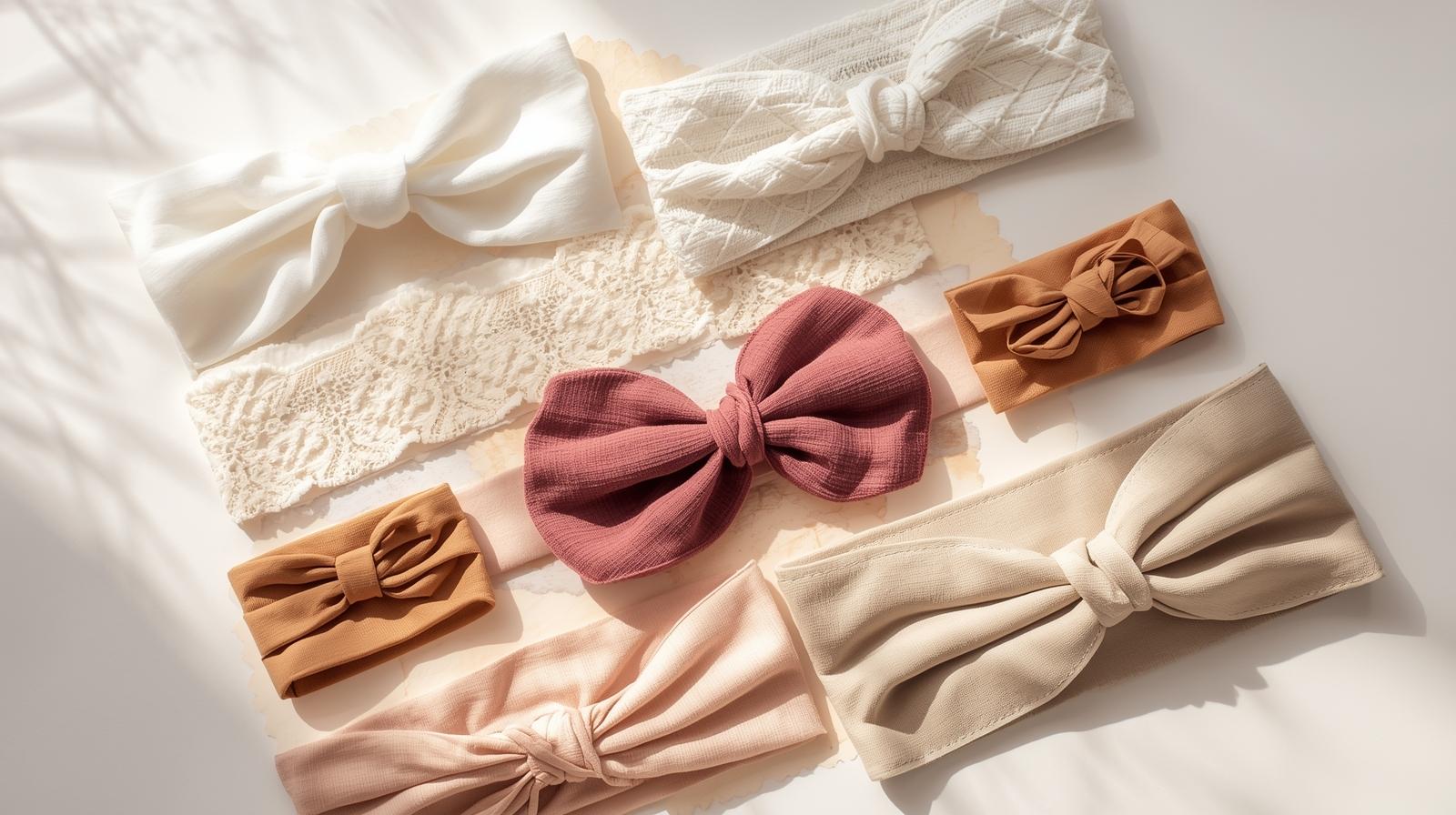Baby headbands are more than just cute accessories; they are designed to bring comfort, softness, and charm to your little one’s outfit. When parents choose a headband, the first thing they should know is what materials it is made from. The fabric decides how gentle it will feel on a baby’s skin, how stretchy it is, and how safe it will be for daily use.
In this guide, we have explained all the common materials used in baby headbands so that you can make a smart choice. From cotton, nylon, and spandex to lace and velvet, each fabric has its own special role. Some are breathable, others are stylish, and a few are perfect for sensitive skin. Let’s explore all baby headband materials in detail.
Why Materials Matter in Baby Headbands
When it comes to newborns, comfort always comes first. A baby’s skin is delicate and can easily get irritated. That’s why the fabric choice in headbands is very important. The wrong material may cause rashes or leave red marks. The right one, however, feels soft, safe, and gentle. Parents also prefer materials that are easy to wash and last long. Some fabrics are stretchy and grow with the baby’s head, while others are firm and stylish. In short, knowing the material helps you find the perfect balance between comfort, safety, and style.
Cotton Baby Headbands
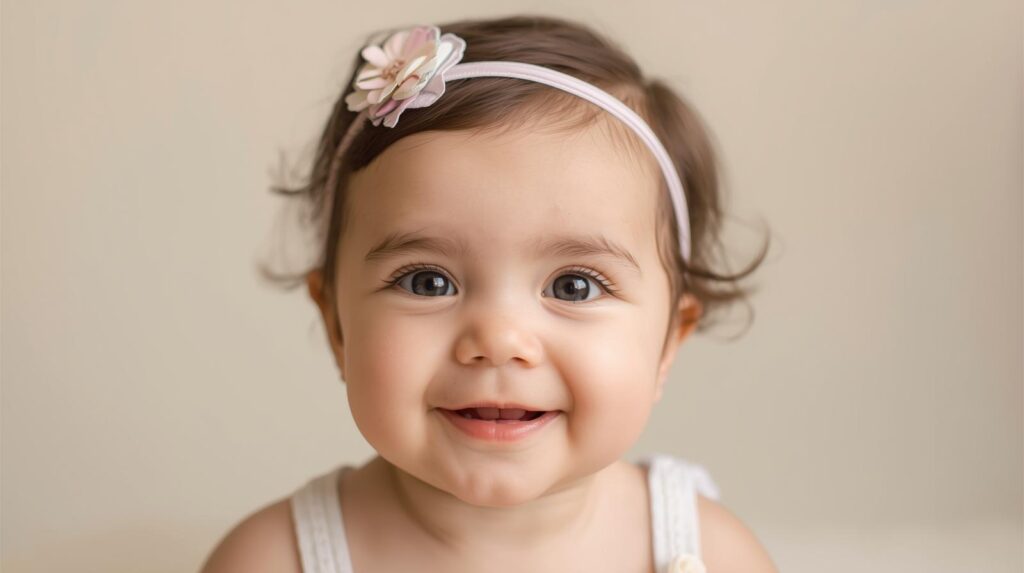
Cotton is one of the most popular materials for baby headbands. It is soft, breathable, and natural, making it a safe choice for sensitive skin. Babies sweat less when wearing cotton headbands because the fabric absorbs moisture. Cotton is also durable and easy to wash, so parents can use it daily without worry. These headbands usually come in many colors and prints, giving a cute look while keeping the baby comfortable. The only thing to note is that cotton has less stretch compared to nylon or spandex. However, it is still one of the most trusted materials for baby accessories.
Nylon Baby Headbands
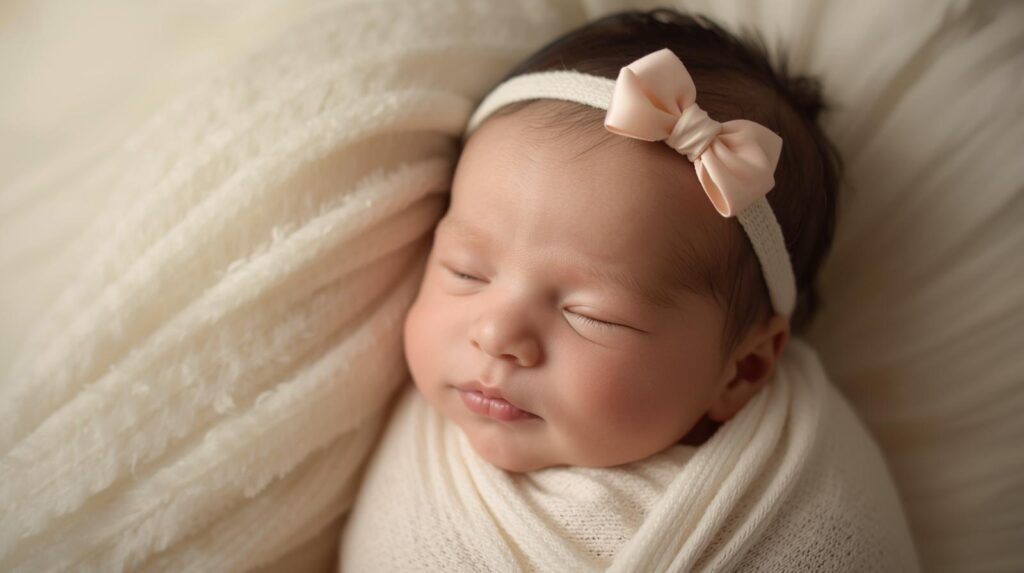
Nylon headbands are known for their stretchiness. They can expand to fit newborns and toddlers without leaving marks. Nylon is smooth, lightweight, and comfortable on the skin. Parents love nylon because it easily adjusts as the baby grows. These headbands usually come in plain designs or with bows attached. The biggest benefit is that nylon stays in place without being too tight. However, nylon can sometimes be less breathable than cotton. Still, for flexible and long-lasting wear, nylon is an excellent choice.
Spandex Baby Headbands
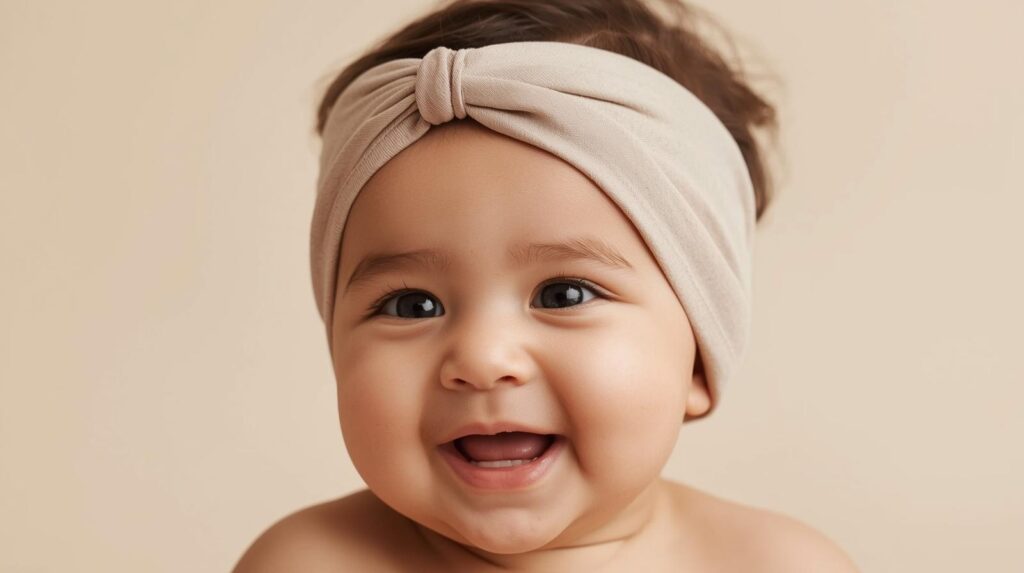
Spandex is often blended with other fabrics like cotton or nylon. The main benefit of spandex is its strong stretch and elasticity. It makes the headband flexible while keeping it snug. Spandex headbands are popular because they hold their shape after many washes. They are also soft and smooth, making them suitable for babies with sensitive skin. Since spandex is usually mixed with other fibers, it combines comfort with durability. Parents who want a headband that fits perfectly without slipping often choose spandex blends.
Lace Baby Headbands
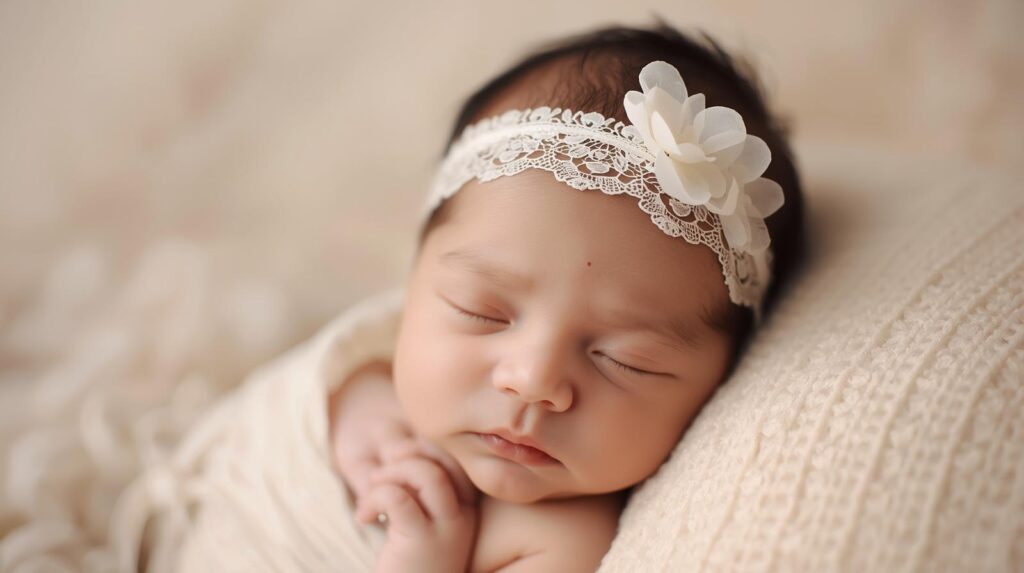
Lace headbands are stylish and elegant, often used for special occasions like birthdays or photo shoots. They are soft when made with cotton or nylon lace, but some rough lace types may feel itchy. Parents should always check the lace quality before buying. Lace headbands are light, breathable, and look adorable with bows or flowers. They give a fancy touch while still being comfortable if the lace is soft. These are not always the best for everyday wear, but they are perfect for adding charm to outfits.
Velvet Baby Headbands
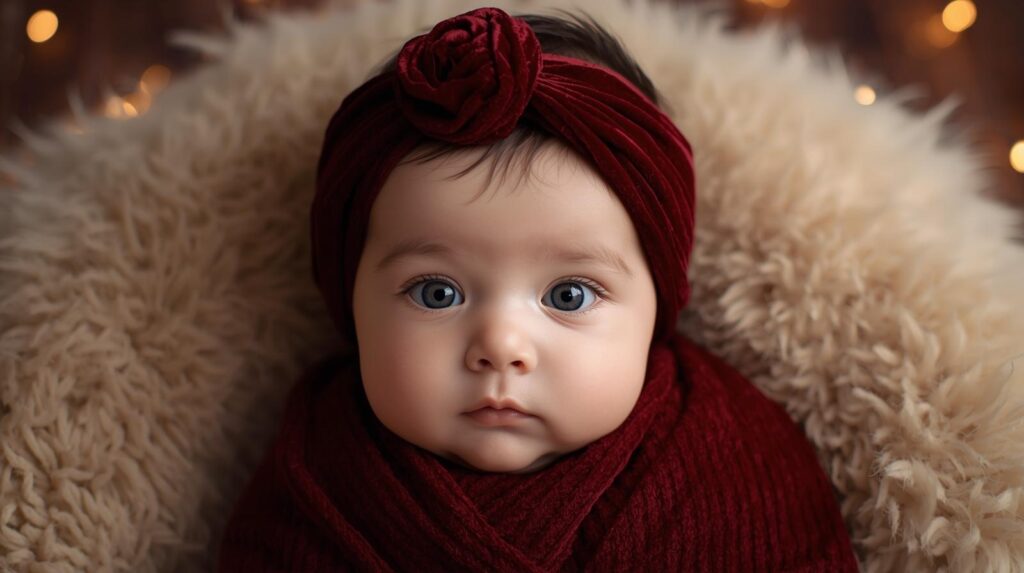
Velvet is a luxurious fabric that feels soft and smooth. It is slightly thicker, making it ideal for cooler weather. Velvet baby headbands add a rich, elegant look and are often chosen for winter events or family photos. The fabric feels gentle on the skin and gives a cozy vibe. However, velvet is not as breathable as cotton, so it may not be ideal for hot weather. Parents who want a touch of elegance usually go for velvet baby headbands.
Polyester Baby Headbands
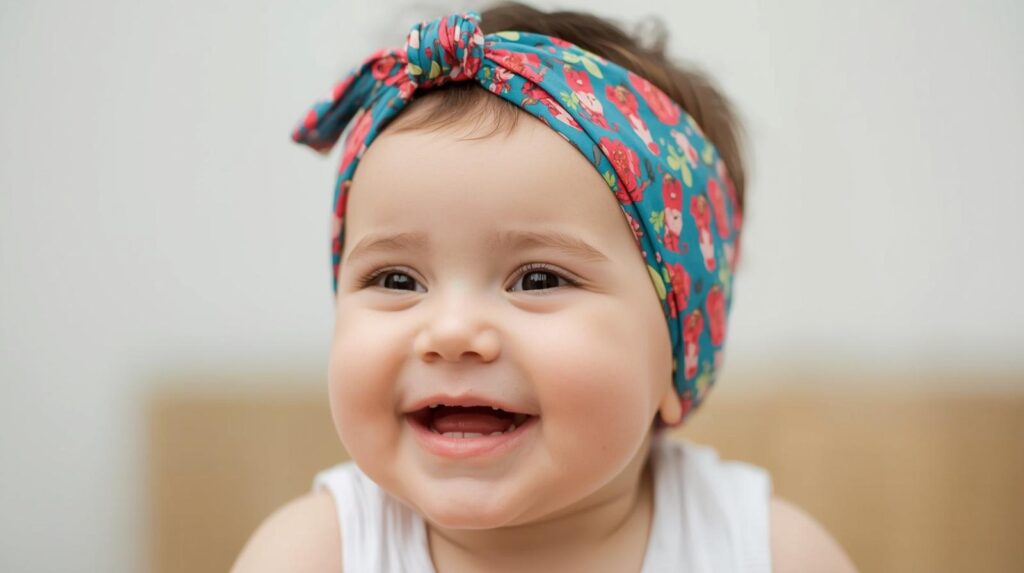
Polyester is a synthetic fabric used in many types of baby headbands. It is lightweight, wrinkle-free, and long-lasting. Polyester blends are often used with cotton or spandex to add durability. These headbands come in bright colors and patterns. The advantage of polyester is that it holds shape well even after several washes. However, it is less breathable than natural fibers. Parents often choose polyester headbands for style and variety rather than daily comfort.
Wool Baby Headbands
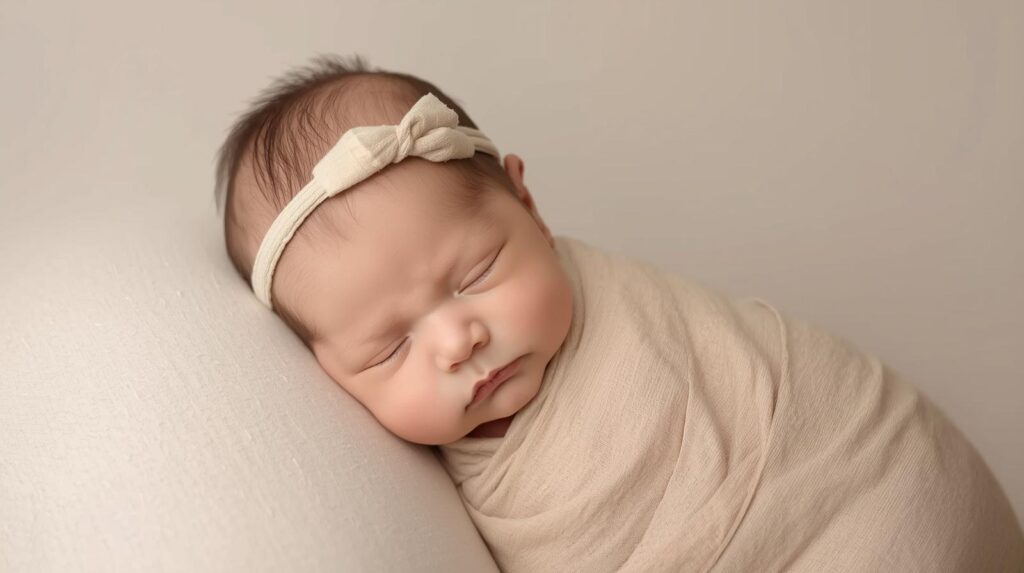
Wool headbands are not very common but are sometimes used for winter wear. Wool is warm and soft but may cause irritation for babies with sensitive skin. If the wool is blended with cotton or acrylic, it becomes softer and more baby-friendly. These headbands are perfect for cold days, keeping the baby warm and cozy. Still, wool should always be checked for softness before use, as rough wool can cause itching.
Organic Fabrics for Baby Headbands
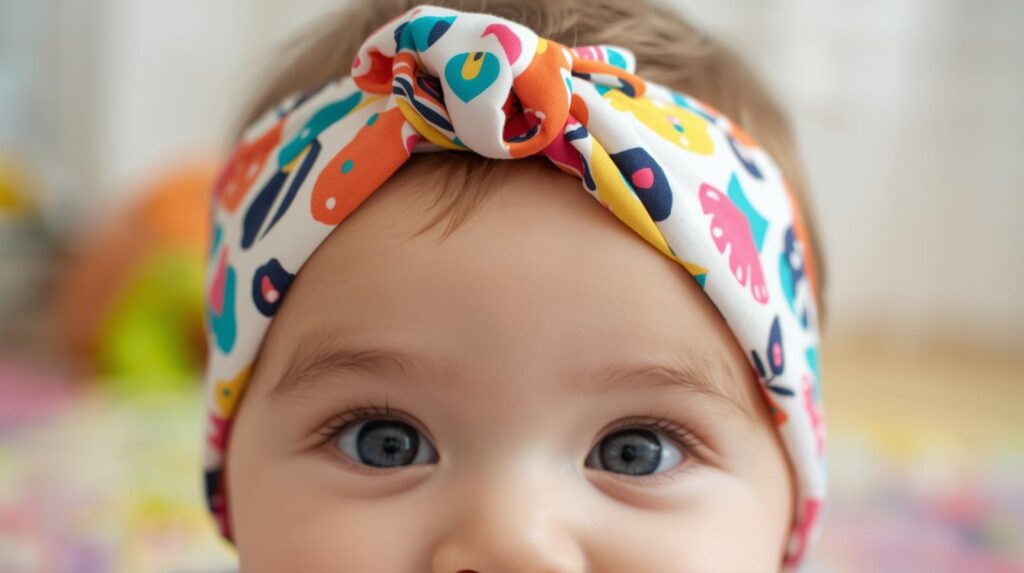
For parents who want eco-friendly options, organic cotton and bamboo fabrics are excellent choices. They are free from harmful chemicals and dyes, making them extra safe for newborns. Bamboo fabric is very soft, breathable, and has natural antibacterial qualities. Organic fabrics are perfect for babies with extra-sensitive skin or allergies. Although they may cost more, parents trust them for long-term comfort and safety.
Elastic Bands and Mixed Materials
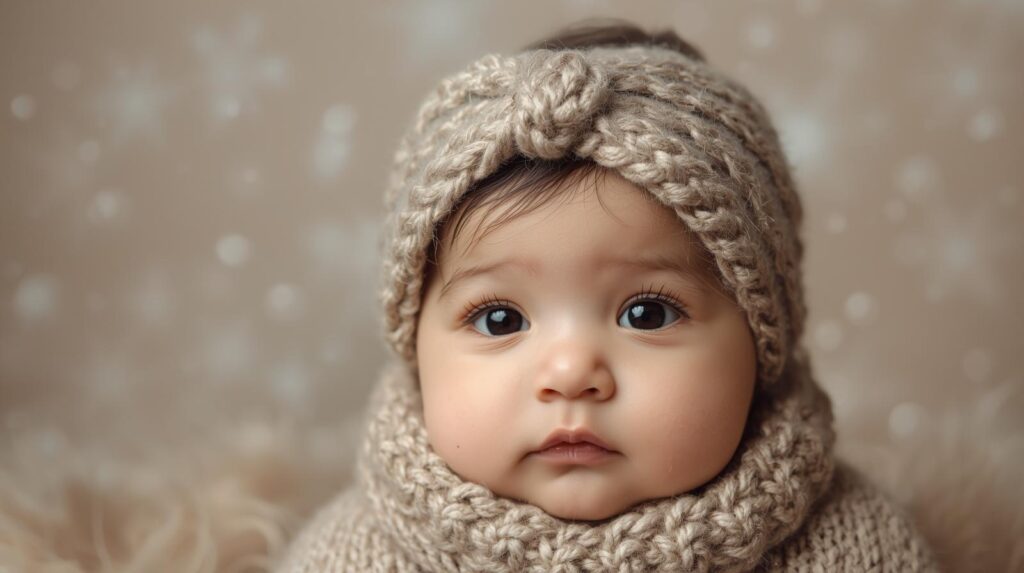
Most baby headbands include a small amount of elastic to improve stretch and fit. Elastic is usually combined with fabrics like cotton, nylon, or polyester. This makes the headband flexible without being too tight. Parents should always check that the elastic is covered with soft fabric so it does not touch the baby’s skin directly. Blended materials create the right balance between comfort, style, and durability.
Choosing the Right Material for Seasons
Different materials suit different seasons. Cotton and bamboo are great for summer because they are breathable and absorb sweat. Velvet and wool are better for winter since they provide warmth. For year-round use, nylon and spandex blends work well as they stretch and stay comfortable. Choosing the right material based on weather helps keep the baby safe and happy.
Safety Tips When Choosing Baby Headbands
- Always pick soft fabrics to avoid irritation.
- Avoid materials with sharp edges or rough lace.
- Make sure the headband is not too tight.
- Wash headbands before first use to remove chemicals.
- Check for small decorations that could come off and be a choking risk.
By following these tips, parents can enjoy stylish baby headbands without worrying about safety.
Washing and Caring for Baby Headbands
Different materials need different care. Cotton and polyester blends are easy to machine wash. Velvet and lace may need hand washing to keep them looking new. Always use mild detergents and avoid harsh chemicals. Drying naturally in shade helps maintain the softness. Proper care ensures headbands last longer and stay safe for babies.
Fashion and Style Choices
Materials not only decide comfort but also style. Cotton headbands look simple and casual. Lace and velvet add elegance. Nylon and spandex create modern, stretchy designs. Parents can mix different materials to match outfits. With so many fabric choices, baby headbands can be both stylish and practical.
Final Thoughts
When it comes to materials used in baby headbands explained, we see that each fabric has a unique purpose. Cotton and organic fabrics are best for daily comfort, nylon and spandex blends give stretch, while lace and velvet add beauty for special occasions. Parents should always choose soft, safe, and skin-friendly materials to protect their babies. With the right fabric, baby headbands can be both adorable and comfortable.
FAQs
1. What is the best material for baby headbands?
Cotton and organic fabrics are best as they are soft, breathable, and safe for sensitive skin.
2. Are nylon baby headbands safe for newborns?
Yes, nylon is stretchy and gentle, but always check that it doesn’t leave marks on the baby’s skin.
3. Can babies wear velvet headbands in summer?
Velvet is thick and warm, so it’s better for winter. For summer, cotton or bamboo is safer.
4. How do I wash lace baby headbands?
Hand wash lace with mild detergent and air-dry to keep it soft and delicate.
5. Are elastic headbands safe for babies?
Yes, if covered with soft fabric and not too tight. Always check the fit for comfort.
